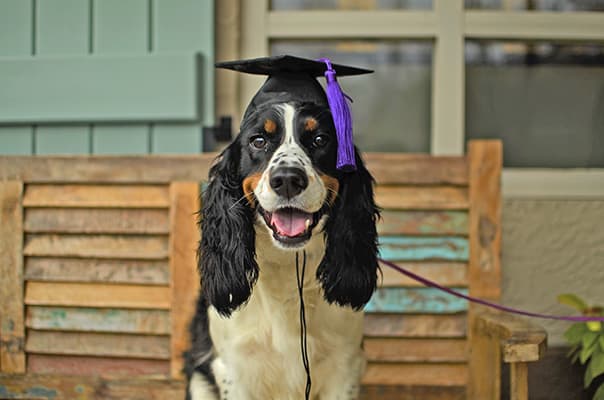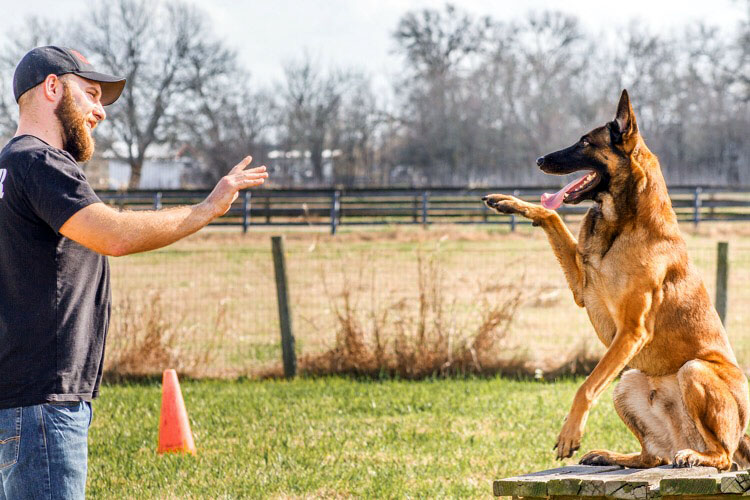How Professional Dog Training Can Enhance Your Dog’s Skills and Behavior
How Professional Dog Training Can Enhance Your Dog’s Skills and Behavior
Blog Article
Beginner's Guide to Successful Dog Training in the house
Effectively educating a canine in your home needs a nuanced understanding of canine actions and effective communication approaches. Developing clear training goals, using high-grade incentives, and preserving consistency throughout relative are important components. Integrating training into daily routines can enhance both involvement and retention. Nevertheless, many amateur instructors run into challenges that might prevent progress. To navigate these complexities efficiently, it's vital to discover numerous crucial elements that can change your approach and bring about an unified relationship with your family pet. What basic principles should every newbie grip to make certain success?
Comprehending Dog Actions
Understanding pet behavior is important for reliable training and fostering an unified connection in between humans and their canine companions. Pets communicate largely through body movement, articulations, and faces, making it essential for proprietors to analyze these signals accurately. Identifying behaviors such as tail wagging, growling, or cowering can provide understandings right into a pet's emotional state and purposes.

Common behavioral issues, such as aggressiveness, anxiety, or extreme barking, frequently originate from misunderstandings or unmet requirements. Observing and addressing these problems without delay can stop acceleration and make sure a favorable training experience. By promoting a deep understanding of pet behavior, proprietors can tailor their training techniques to match their canine companions, eventually bring about a contented and well-behaved family pet.
Essential Educating Devices
A well-equipped training space can dramatically enhance the performance of pet dog training at home. Vital training devices make certain that both the canine and the trainer can engage in productive sessions that foster knowing and bonding.

Spending in a strong leash and a comfortable, well-fitting collar or harness is important for safety and control. These devices help develop limits and ensure the dog continues to be safe during training. In addition, a marked training location, without interruptions, aids focus for both the pet and the trainer.
Training aids such as training pads, cones, or agility tools can also improve the experience by presenting selection and obstacles. Finally, having a notebook or digital application for tracking progress can be invaluable, allowing you to note successes and areas for improvement. Using these important devices will certainly create a positive training atmosphere and lay the structure for efficient discovering.
Producing an Educating Regimen
Establishing a regular training routine is crucial for effective canine training in the house. A well-structured routine not only aids in reinforcing desired habits yet additionally gives your dog with a sense of protection and predictability. To develop an effective training routine, start by recognizing details training goals, such as fundamental commands, Discover More chain strolling, or house-training.
Choose a marked time each day for training sessions, preferably when your dog is alert and responsive. Sessions ought to be short, roughly 5 to 15 minutes, to maintain emphasis and prevent fatigue. Uniformity in timing and setting will certainly improve your pet dog's discovering experience.
Integrate training into day-to-day tasks to strengthen skills. Practice commands during strolls or nourishment, which integrates learning right into all-natural routines. Additionally, remain adaptable and adjust the routine as essential, accommodating your dog's power levels and mood.
Positive Support Methods
Positive support strategies are essential to effective pet dog training, promoting wanted habits via incentives instead than punishment. This technique uses favorable stimulations, such as treats, praise, or playtime, to encourage dogs to duplicate particular actions. The foundation of this technique is timing; benefits must be offered instantly adhering to the preferred actions to develop a clear association.
When implementing positive support, it is vital to select rewards that are encouraging for your canine. High-value deals with, such as little pieces of poultry or cheese, can be specifically efficient during training sessions. Furthermore, differing the rewards can preserve your pet's rate of interest and excitement.
Start with basic commands, like "rest" or "stay," and progressively progress to a lot view more intricate tasks. Uniformity is crucial; make sure that all member of the family make use of the exact same commands and reward systems to prevent confusion.
In addition, it is crucial to remain individual and avoid irritation. Canines, like humans, learn at their own rate. By cultivating a helpful training atmosphere with favorable support, you can enhance your pet dog's learning experience while enhancing the bond in between you and your hairy companion, laying the groundwork for effective training results.
Typical Educating Difficulties
While educating a pet dog in your home can be a satisfying experience, it frequently features a set of common difficulties that can check both perseverance and consistency. One prevalent issue is distraction. Pets may end up being quickly averted by noises, movements, or perhaps scents in their atmosphere, making it hard to maintain their emphasis throughout training sessions.
An additional difficulty is incongruity in commands and reinforcement. If member of the family make use of different hints or rewards, it can impede and puzzle the pet dog progression. Establishing a unified strategy is important for effective communication.
In addition, dogs can experience irritation or anxiety, particularly if they do not recognize what is anticipated of them. This can lead to unwanted behaviors, such as chewing or barking.
Finally, the timing of support is crucial (Dog training). Postponed benefits can decrease the efficiency of positive support, as canines may fall short to attach the habits with the reward
Overcoming these obstacles requires commitment, clear interaction, and a structured training strategy. Recognizing and addressing these typical obstacles will certainly lead the way for a much more effective and delightful training experience in your home.
Verdict
To conclude, effective canine training in your home necessitates a detailed understanding of canine behavior and reliable communication techniques. By developing clear training goals and making use of top notch treats alongside positive support, the training process comes to be a lot more gratifying for both the canine and the fitness instructor. Uniformity, patience, and adaptability are essential elements that facilitate understanding. Ultimately, integrating training right into everyday routines improves the bond in between pet dog and proprietor, making the experience both productive and enjoyable. my review here
Developing a regular training regimen is crucial for reliable pet training at home.Favorable support methods are fundamental to reliable pet training, advertising preferred behaviors with rewards rather than penalty (Dog training). By promoting a helpful training environment with positive support, you can boost your canine's discovering experience while strengthening the bond in between you and your fuzzy buddy, laying the groundwork for successful training end results
In final thought, successful dog training at home demands a thorough understanding of canine actions and efficient communication methods. By developing clear training objectives and using top notch deals with together with positive reinforcement, the training procedure comes to be a lot more rewarding for both the canine and the trainer.
Report this page